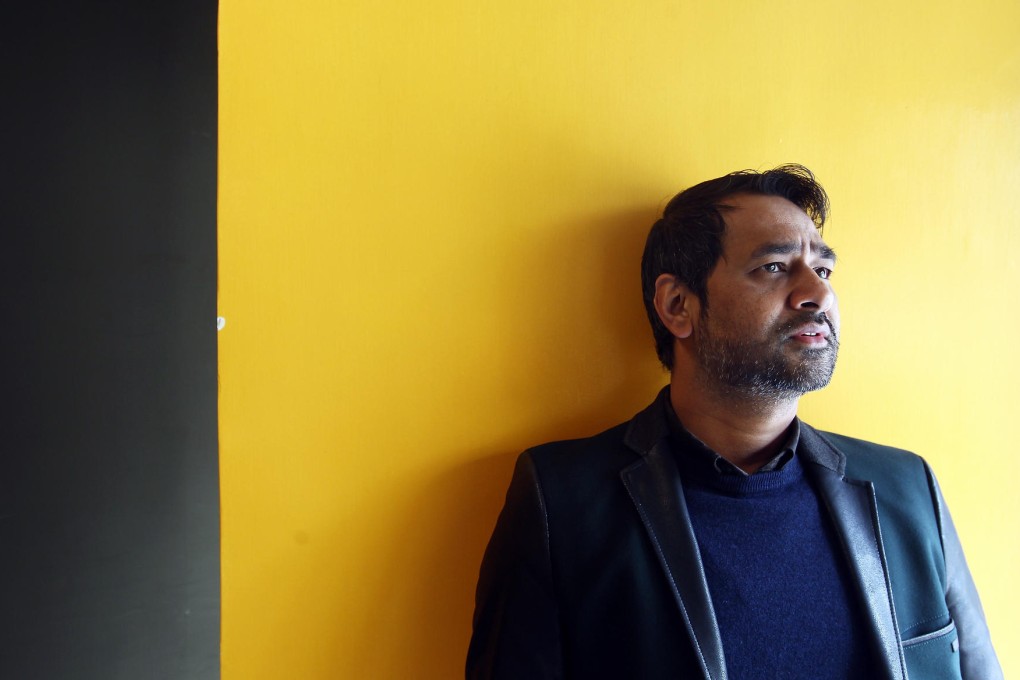Pakistani miniatures artist gets the bigger picture
Miniatures artist Imran Qureshi addresses the politics of violence in his work, writes Payal Uttam

It is almost noon and Pakistani artist Imran Qureshi is struggling to hold back yet another yawn. Jetlagged and unshaven, he apologises and explains that he has been painting non-stop for his show at Pao Galleries in Wan Chai, which ended on Friday. "Usually when I work, I work madly. Sometimes I don't sleep for two days," he says. Judging by the exquisitely detailed works around us, it's been a while since he has had a decent night's rest.
Known for his installations of blood-like paint splattered across everything from an old courtyard in Sharjah to a slipway in Sydney, Qureshi is one of Pakistan's leading artists. Originally trained in the art of classical miniature painting, he is recognised for pushing the boundaries of the discipline. His Hong Kong show, with his wife Aisha Khalid, unveiled his new jewel-like miniatures, abstract drawings and canvases of blood-stained landscapes.
The idea of landscape has changed. They are supposed to be very peaceful but not now due to all this global violence
"They look very seductive, very exotic, but then there is something disturbing happening which makes them uncomfortable," says Qureshi, pointing to rivulets of red paint. "The idea of landscape has changed. They are supposed to be very peaceful but not now due to all this global violence."
Born in 1972 in the city of Hyderabad, Qureshi has been fascinated by politics and world affairs since he was a child. "First thing in the morning when I got out of bed, I would just grab the newspaper from the door and read the main headlines," he says. Aged nine, he began submitting creative stories to the newspaper: "No one asked me to do it. I was into such things, but I didn't have any idea that I could complete my studies in art and make it my profession."
At the suggestion of his uncle, Qureshi moved to Lahore when he was 18 to pursue a degree at the National College of Arts, but never imagined he would become a miniaturist. "I was so much into theatre, puppetry and hanging out," he says, laughing. "Miniature painting wasn't my cup of tea, but my teacher was always asking me to do it." Swayed by his professor's persistence, Qureshi conceded and was surprised to find he enjoyed it: "I never thought that I could sit like that with so much patience."
Qureshi spent two years creating replicas of ancient miniatures, making his own paper and paintbrushes from squirrel's hair. But he felt stifled. Not content to continue making copies, he defied his professor and began to experiment. "It was hard," he says. "I was challenging his notions in front of him. I was not daring generally, but I was when it came to my work."
Veering away from traditional miniatures depicting religious narratives or scenes from courtly life, Qureshi started exploring political and social issues affecting present-day Pakistan. Scavenging in old bookstores, he found colonial-era tailoring manuals and tore out pages, integrating the text into his paintings. "I found them so relevant and loaded with political meaning. There was a section on 'How to cut the front of a burqa', and one on 'How to cut an artillery pantaloon where the military pantaloon has more pockets than the civilian one'," he says, incredulously.
